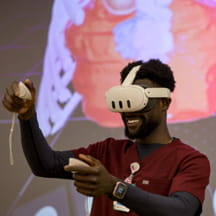For patients and their families receiving care at Boston Children's Hospital, transparency means access to clinician notes from their medical visits. "A number of studies have reported numerous benefits of allowing patients access to their visit notes," says Fabienne Bourgeios, M.D., M.P.H., pediatric hospitalist and physician lead for the patient portal at Boston Children's Hospital.
Among the benefits: Bourgeios says the notes give patients a better understanding and sense of control of their care plan, improved ability to prepare for their medical visits and a stronger comprehension of their medications—translating to better medication adherence.
Benefits to the pediatric population
Boston Children's is among a growing number of institutions using OpenNotes. OpenNotes' mission is "an international movement committed to spreading the availability of open visit notes and studying the effects." Participating institutions leverage their existing electronic health record (EHR) and patient portal systems to provide patients and their families access to their medical visit notes.
To date, more than 40 million Americans have access to their notes under the OpenNotes model. Although most of the users—and thus the research around them—are adult patients, Bourgeios points to research that shows the benefits of note transparency for pediatric patients and their families:
- Enhanced communication among multiple caregivers. Since pediatric patients often have many people charged with their day-to-day care, access to notes ensures consistent information is available to all involved—especially for those not present for the medical visit.
- Timeline in one place. Notes provide a longitudinal medical narrative for a patient across his or her medical history.
- Care coordination. Since medically complex children often have multiple visits across a variety of specialties, notes help parents ensure there are no gaps in communication among providers. "Providing the notes can help mitigate the risk of fragmentation or incomplete medical information—they can be shared among the extended care team," Bourgeios says.
- Smooth transition to adult care. Notes aid adolescent patients in understanding their medical condition and taking ownership of their care plan as they transition out of pediatrics.
Not without certain challenges
Bourgeios says patient and family access to notes does pose some challenges. Among the primary hurdles to widespread adoption of OpenNotes in pediatrics:
- Adolescent confidentiality. Many states have laws, which vary widely from state to state, allowing a minor to independently seek medical care without a parent or guardian's consent. Reproductive health, sexually transmitted diseases and infections, substance abuse and mental health are among the conditions where adolescent confidentiality may be assured by law.
- Parent confidentiality. Likewise, in many cases, a parent may need to share confidential information pertinent to their child's care. But they may wish to conceal information around adoption, misattributed paternity, parental substance abuse, domestic violence or maternal prenatal test results from the child, the other parent—or both.
- Other challenging situations. Other circumstances may arise where sharing the visit notes could adversely impact the relationship among the patient, parent and provider. These scenarios include strong disagreements regarding the diagnosis or treatment plan and suspicion of medical child abuse or neglect.
Building a framework to address the challenges
The team at Boston Children's established a binary system of note categorization. Notes deemed confidential would only be visible to care providers, while non-confidential notes could be accessed via the patient portal.
Bourgeios and a multi-disciplinary team from across Boston Children's—including providers from high-risk clinics, the legal and compliance teams and the health information management director—determined categories for confidential note types. Ultimately though, the providers have the flexibility to flag information as confidential and to create split notes—separate sets of confidential and non-confidential notes—for a single patient visit.
Improving the process from both ends
Bourgeios says the feedback she's received from patients and their families has been overwhelmingly positive, but she and her team continue to seek ways to improve the program. They're exploring ways to be able to parse out confidential notes to send to appropriate parties—they're currently only accessible by providers in the Boston Children's system. Another work in progress, for Bourgeios as well as the OpenNotes team, is provider education.
"We set out to research what happens when patients read their notes, but now providers are asking about how to write the notes," says Amanda Norris, project strategist at OpenNotes. "All the research is around documentation as usual, but some folks are now thinking that because the audience is different—it's actual patients reading the notes—how might they tweak their notes to be a little more patient friendly."


